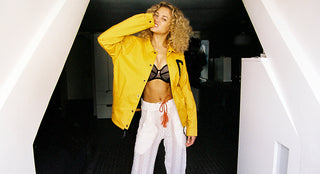One of the greatest challenges that any creative faces whilst building a career out of a hobby is keeping the vision alive. Once your art starts to become your job, it’s easy to fall out of love with your original passion. The secret is balance—to find a way to keep yourself creatively stimulated whilst also stacking enough coin to make rent. Talking recently with photographer Christina Paik, she explained how she found her work/life balance from relentless hustle—travelling the world and naturally slipping into her own charming style of photography that even she herself struggles to define.
We touched upon how she develops her process through mistakes, why she doesn’t prefer the term “fashion photographer,” and broke down her infatuation with film photography as well as her defining work with Virgil Abloh’s Off-White brand. When we spoke, she was in the midst of finishing a book, Meufs, which is slated to launch mid-May in Tokyo and Seoul. For our interview below, she hand-selected some of her favourite images to support our conversation, explaining the reasoning behind a few, with the rest open to your interpretation.
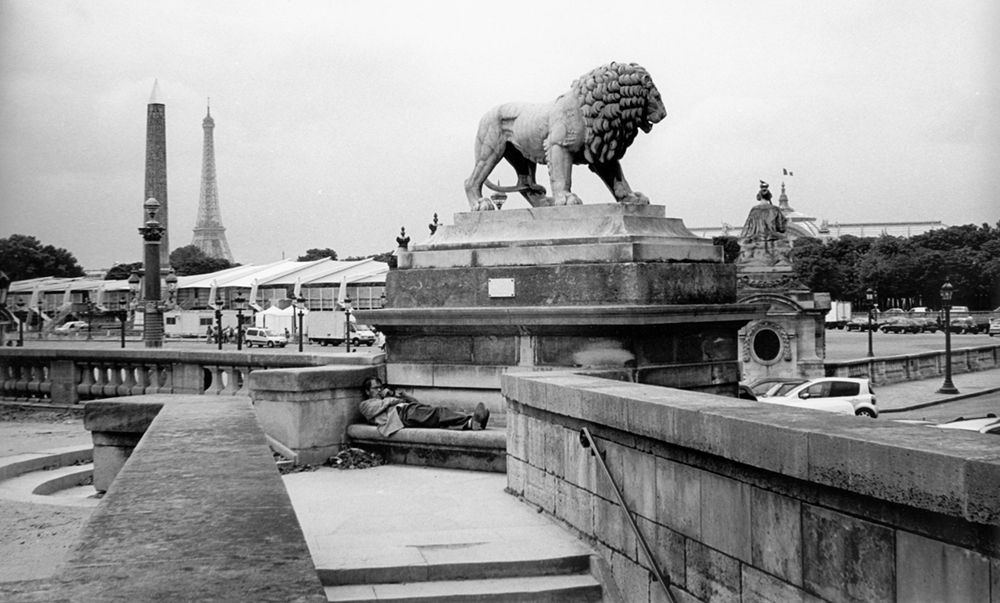
PARIS2008
TOM WINSLADE: I know you’ve moved around a lot—so I was wondering where you enjoy spending the most of your time, and where it feels like home?
CHRISTINA PAIK: I lived in Paris for 4 years, which definitely helped me to develop my photography. The aesthetic of the city is so beautiful, and I’m really into architecture, so I like to play around with the whole environment. Paris helped me grow as a person and it taught me how to enjoy shooting.
The black and white photo of Paris [above] depicts my favourite spot in the city. It’s right outside this museum called Jeu de Paume and that year they had a show for Richard Avedon on, which was kinda when I realised that photography was what I really wanted to do. I saw that guy sleeping there outside the exhibition and I’ve taken the same shot every time I’ve been back there since. So yeah, I consider Paris home.
Amazing. And right now you split your time between Paris and NYC mostly, is that right?
Yeah, I actually went to school in New York and then I left for a change of scenery. I love New York, but I also hate it—as a photographer and an artist, of course New York is inspiring, but aesthetically I shoot with natural light and the environment, and I can’t find any space in the city that I feel too comfortable with. I also like a frame clear of people, with the exception of the model—and obviously the city is a very busy place. It’s definitely a challenge. Back then, I used to always shoot horizontal, but of course New York is very vertical—aesthetically it just wasn’t as pleasing, whereas Paris is so beautiful to me. I split my time between the two, but I also travel so often. I try and visit a different country each month.
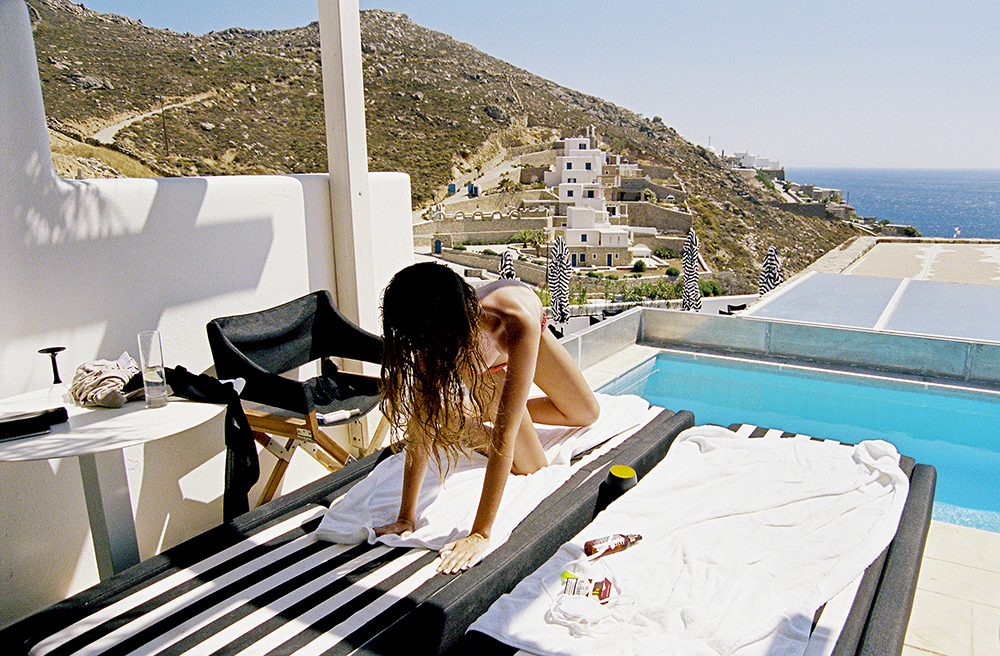
INDIA FROM NEW ZEALAND, MYKONOS2013
Would you say that the changes in environment allow you to distinguish between being in hustle mode and perhaps being in a more relaxed, experimental headspace?
I’m always in hustle mode, 24/7. Work is something I’m addicted to, to the point I actually enjoy stressing myself out. I’m working on a book right now, and that came about in the space of a month after getting back from Tokyo and Hong Kong. The day I got back from Asia, I was just like, “Okay, I wanna do this book now—I want to do it in a month,” and I had people telling me that would be too rushed. It frustrates me the most when people say I can’t do something. If anything, that motivates me to do it even more.
“It frustrates me the most when people say I can’t do something”
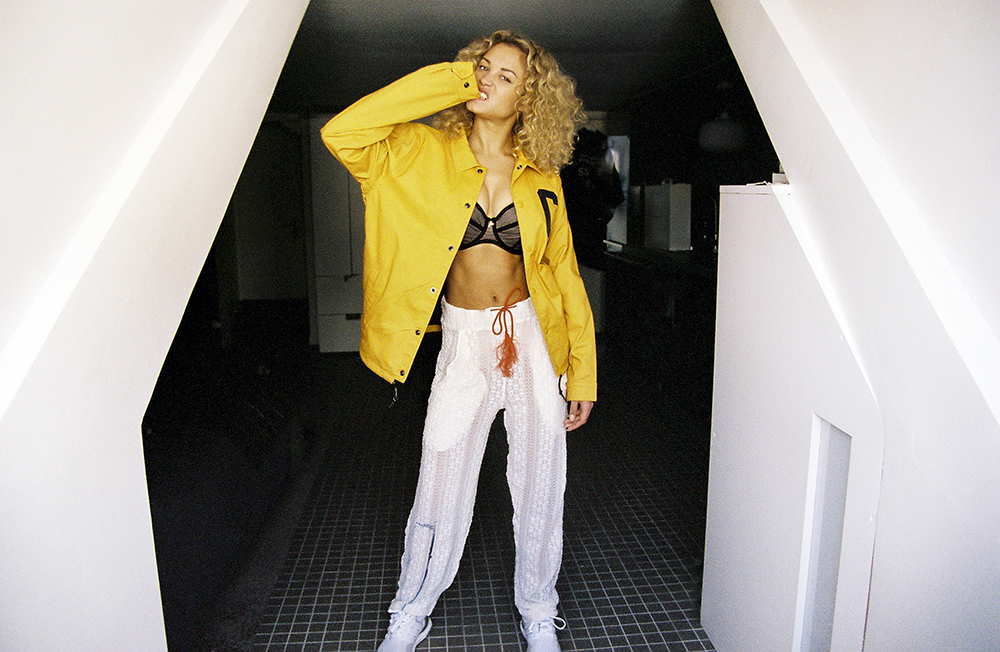
ROSE BERTRAM, PARIS2016
When it comes to choosing your subjects and the models that you use, are you often more inclined to find a muse or use someone that you can shoot multiple times, in order to develop a creative relationship with them?
The chemistry between the sitter and I is really important to me. If the model gets my vibe, it’s just easier to work with. I have a couple of muses. With Rose [pictured above wearing Carhartt and A-COLDWALL*], she came to my casting and I was ready to send everyone else home. The first time we shot, she just understood me and I understood her—and I like that she’s playful, because I’m always most intrigued by the personality. We’ve shot together maybe 5 or 6 times and it’s interesting because it becomes more of a growing process, and it naturally becomes more comfortable. Especially the girls who have bigger names, I feel like they enjoy shooting with me because it’s a more intimate setting and it doesn’t feel like “work” in that environment.
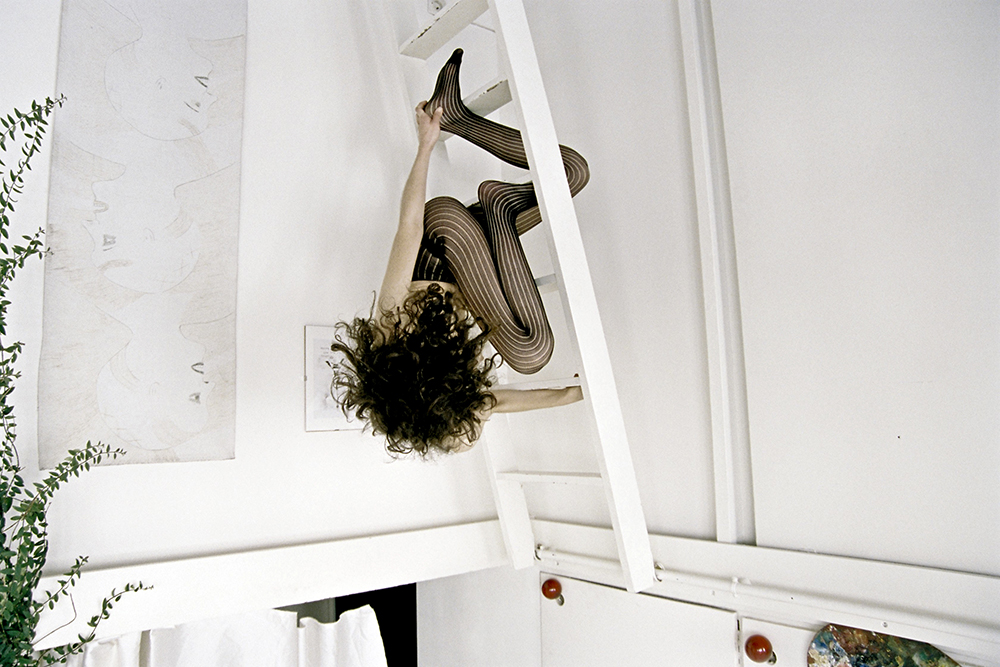
CERISE FROM THE US, PARIS2012
I’ve always been intrigued by the body, so I started this series entitled “STUCK” where girls were doing these awkward, unsettling poses and movements. The audience didn’t necessarily have to know what the narrative was, that was more simply my inspiration. I never knew the idea of “home” as I moved around my entire life, and that inspired this idea of being stuck within a home and it driving you crazy—not knowing what you’re doing with yourself, and losing your mind out of boredom. I never sold the idea as “this the reason why the model is positioned like this,” I’d rather just let people look at the photos without knowing the background and let them appreciate or interpret it independently.
“I never knew the idea of ‘home'”
I like the idea of not shoving the narrative down the viewer’s throat. It’s almost like when you’re at a conceptual art gallery, and people gather around these paintings or sculptures or whatever trying to figure it out, they often just project their own meaning onto the art—and that’s what is most impactful.
Right, it’s down to personal experience. Photographs are quite literally images captured from one person’s view but when shared it’s like letting others borrow your view and see through your eyes. One of my main purposes when shooting is that I want the audience to look at the photo once, and then look at again from another perspective—asking themselves, “What the fuck is happening?”
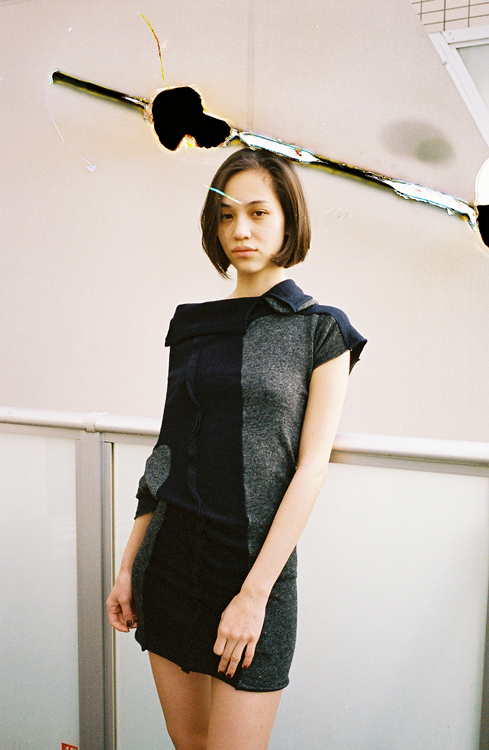
KIKO MIZUHARA, TOKYO2016
This shot of Kiko was the end of roll, and I liked the unintentional damage to the frame. That’s one of the things that intrigues me the most about the film aesthetic: I find beauty where it’s least expected. I’m more drawn to “mistakes” as I learn from them, but I also learn to love them too.
Would you say that you’re of the mentality that there’s no such thing as a negative “mistake”—in that you can only learn and grow from those experiences?
Yeah, I love to make mistakes. Even some of my favourite photos, I didn’t mean to do that. I’ve definitely had a lot of shoots where that wasn’t my intention but it came out sick. That’s why I like solely shooting with film, because I can’t see it and it forces me to go with the flow in my process. I don’t like to say that I’m a fashion photographer, and I prefer the term “portrait artist” as it’s more about the person. Obviously fashion plays a huge part in my work, but for me fashion is just the accessory, and it’s always more about the individual.
“I love to make mistakes”
In continuing to find your own style and direction, is that something you purposefully set out in search of? Or has your aesthetic been more of a natural development, born from playing around and experimenting with your work?
If you asked me what my style was, I would not be able to answer that. Throughout the years, people have told me that they could recognise my photos from a mile away, and that I have a distinct aesthetic—but I honestly don’t know what that is. I’ve always just been shooting for the love of it, and it’s awesome that people recognise my work but I still don’t know how to define my style.
I think that’s healthy in the sense that you won’t easily get caught up in your own expectations. Being aware of your style could almost automate how you approach your work, and put a barrier between yourself and your own creativity.
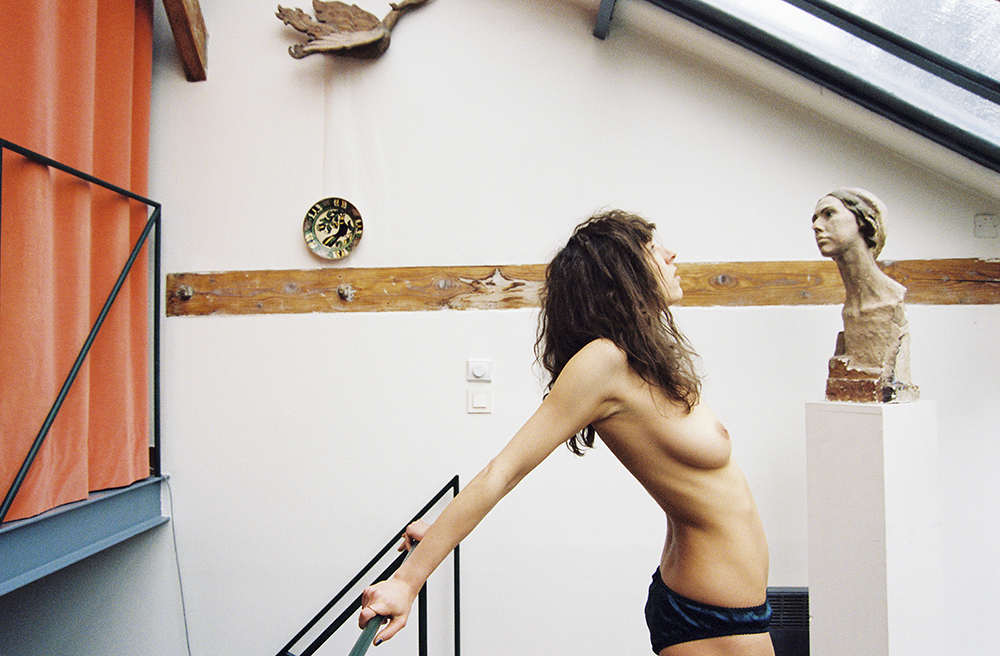
CHLOE FROM GREECE, PARIS2012
We have a mutual friend in Samuel Ross, and he gave me a question for you. He said, “Why have you started covering your face more on Instagram?”—which actually ties in with a post you made about that recently. So I was wondering if you could speak on that subject, and why it’s a conscious decision to cover your face or not?
From the jump I never posted my face, just because I wanted people to experience my work by itself, and I didn’t want to have anything personal on there. Obviously the work in itself is personal, but I want the body of work to have an identity that exists separately from me. I don’t want people to judge the work based on whether they like what I look like or not. The artwork I create is an extension of me.
But then I started to get a lot of hate mail from people, saying I must be “ugly” because I don’t show my face, and that shocked me. Recently I’ve been more comfortable with it, but I still prefer to hide my face—even though when I do post it, I seem get more jobs, which is pretty fucked up. I prefer keeping my identity a mystery, because I feel like that keeps people intrigued in myself and my work. It’s almost a part of my branding.
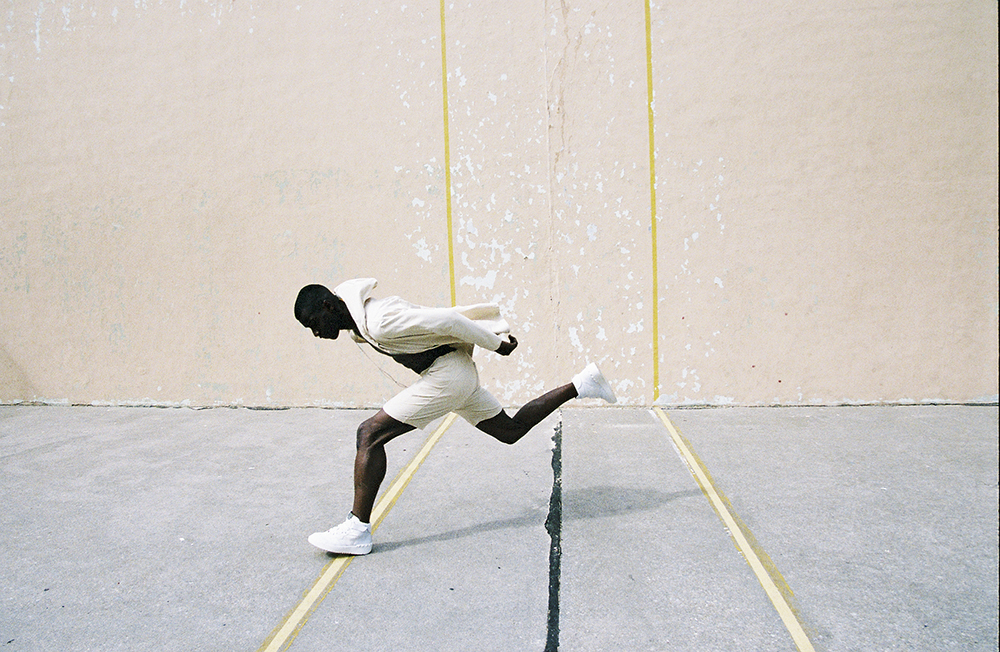
ADONIS FROM THE IVORY COAST, NY2015
I was wondering how you bring your passion for portraiture into your fashion photography, and what it’s like to work with brands like Off-White, who I imagine give you space to experiment and create art?
Virgil has supported me since day one, and that’s a mutual thing as he knows I support him too, so it was really organic. I didn’t expect that we would work together all the time, but it just came naturally. Even when we work together now, he doesn’t really give me much direction, he just trusts me and it’s cool. Obviously that can be a little challenging sometimes, if the direction is vague, but we both grow from that, because we’re both so openminded. We just vibe really well together. When I think about fashion photography, it’s all about showing off the pieces, and selling the product; but I can’t do that, I’m more about the models and the mood of the image, so the clothing is kinda secondary. It’s just cool that my vibe suits the aesthetic of Off-White.
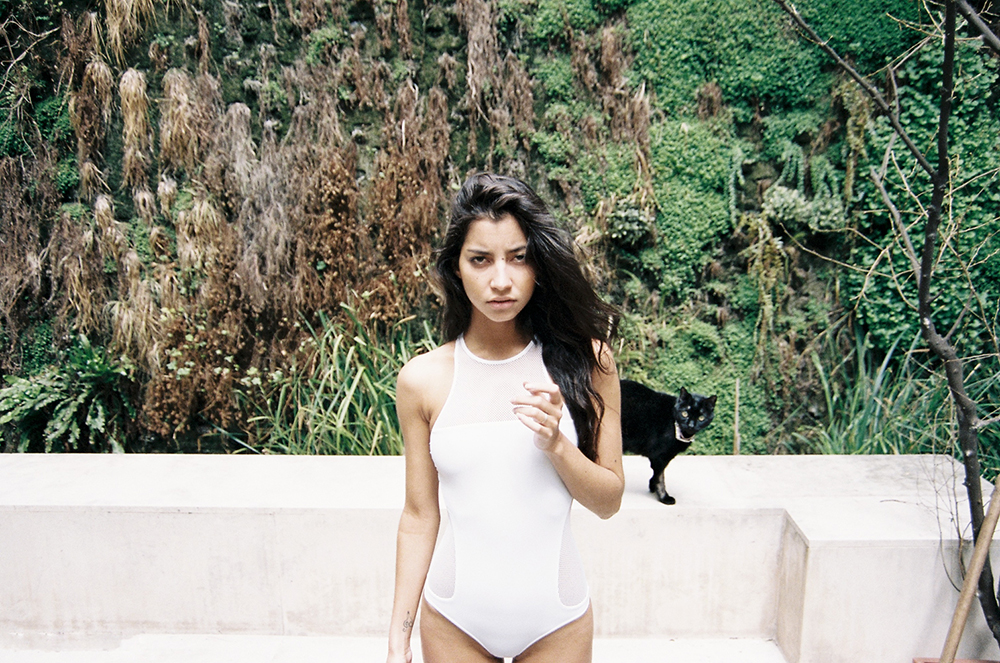
EMILIE FROM TAHITI, PARIS2013
What are you working on right now, or what can we expect to see from you in the near future?
So I’ve been working on this book, which launches next month in Tokyo and Seoul. I never did a book or show before because I wanted to exhibit my work after like 10 or 20 years of shooting. I guess I’m kinda old school that way. People kept asking for me to do a book though, so this is more for them. It’s nothing too serious, it’s just 64 pages of my girls which will be available in Tokyo, Seoul and then online. It’s a one-off for me really. After that, I also want to play with ideas like my “STUCK” series, or my self-portraits again. I just want to carry on making art.
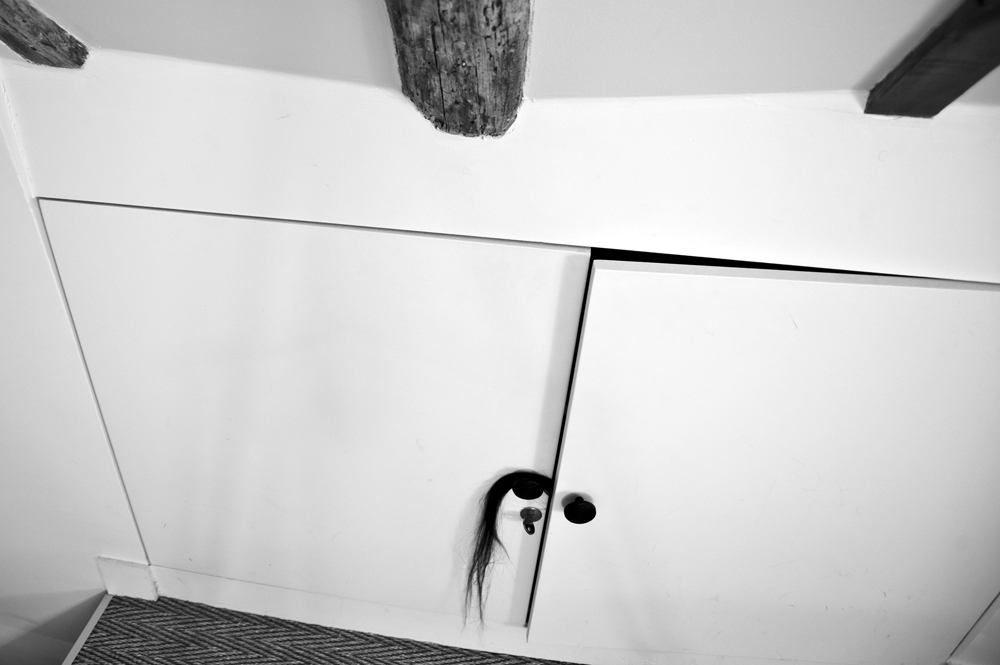
SELF-PORTRAIT PARIS2012
***
Stay up to date with Christina’s work via Instagram.

